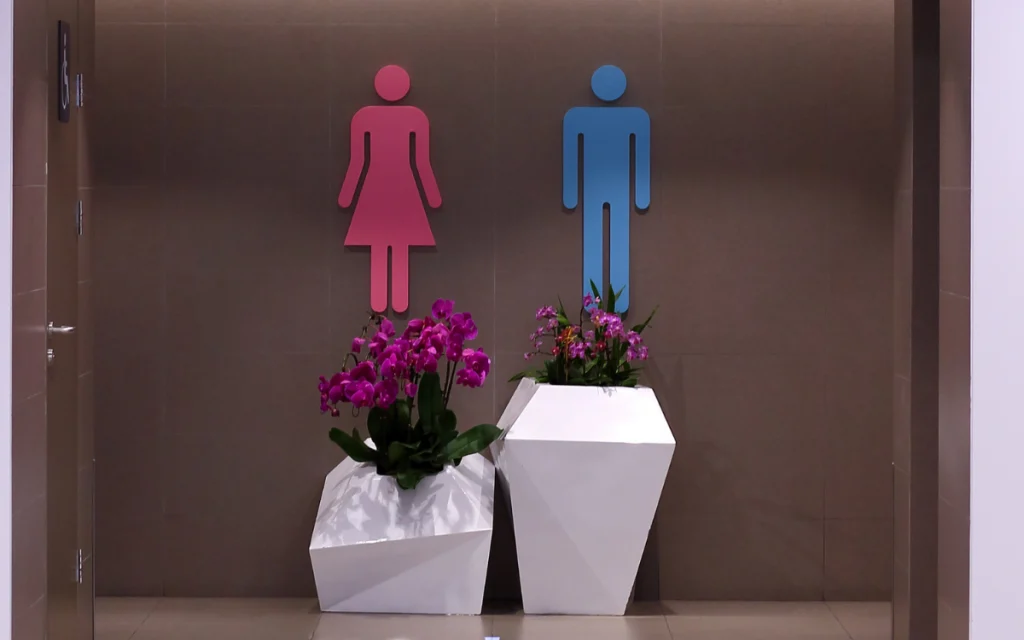The Changing Reality of Parenthood: A Tale of Missing Changing Tables
In a “pretty nice restaurant” in Richmond, Virginia, writer Lauren Dodds encountered a scene that perfectly captures the disconnect between modern parenting and outdated facilities. While visiting the ladies’ room, she found a man already inside who immediately began apologizing for his presence. Rather than being shocked or uncomfortable, Dodds quickly understood the situation: he was changing his baby’s diaper, and had no other choice since the men’s restroom lacked changing facilities. This encounter sparked a realization for Dodds about how everyday infrastructure fails to accommodate the evolution of parenting roles in the 21st century.
“It’s just so strange to me that in 2025, it’s assumed that only women would ever be responsible for changing a baby,” Dodds reflected after the incident. The absence of changing tables in men’s restrooms sends an outdated message about parenting responsibilities that no longer matches reality. When Dodds discussed the situation with her husband, she discovered this was far from unusual – he shared his own struggles, having been forced to change their children’s diapers on sinks and even atop a hand dryer in the past. These makeshift solutions highlight a common problem fathers face when caring for their children in public spaces, often leaving them with uncomfortable choices: enter women’s facilities, use unsanitary impromptu surfaces, or wait until they can find appropriate accommodations.
The experience compelled Dodds to share her thoughts on social media platform Threads, where her post resonated with thousands. She wrote that her immediate reaction wasn’t concern about sharing a bathroom with a man, but rather disbelief: “It’s 2025, how tf are places still not putting changing tables in all the bathrooms?” The post garnered over 13,000 likes and numerous comments from parents sharing similar experiences. One user recounted visiting a large children’s museum where, ironically, the men’s restroom had no changing table. Another mentioned their son having to use women’s facilities at a Starbucks thirteen years ago – suggesting this problem has persisted for over a decade. The conversation revealed varying experiences across different regions and countries, with some American cities reportedly doing better than others, while several international commenters noted better accommodations in countries like the UK.
This infrastructure gap reflects a society that hasn’t fully adjusted to the dramatic shift in parenting dynamics over recent decades. According to Pew Research Center data, the traditional family structure with father as sole breadwinner has declined significantly – from 47 percent of couples with children under 18 in 1970 to just 27 percent by 2016. Modern families increasingly feature dual incomes and shared parental responsibilities, yet public facilities often remain designed for a bygone era where childcare was considered primarily women’s work. The missing changing tables are symbolic of broader societal assumptions about gender roles in parenting that have failed to evolve alongside the actual lived experiences of today’s families.
The absence of inclusive facilities creates unnecessary complications for families and reinforces outdated gender expectations. When fathers take their children out without mothers present, the lack of changing facilities can turn a simple outing into a challenging experience. Some fathers report planning outings around known locations with appropriate facilities, while others resort to changing children in car backseats or on public benches. Beyond the practical inconveniences, these situations send subtle but powerful messages to both parents and children about who “should” be handling certain parenting tasks. For men actively engaged in childcare, the message feels exclusionary; for children, it normalizes gendered divisions of parental labor that many modern families are working to overcome.
Dodds believes the solution is straightforward: “At the very least, if you’re going to have gendered bathrooms, then put a changing table in both. Or have a separate family room so there’s also a clean place to breastfeed.” These reasonable accommodations would support all types of families and caregiving arrangements without making assumptions about who will be caring for children in public spaces. As families continue to evolve and parenting responsibilities become increasingly shared, public infrastructure needs to catch up with social reality. The changing table controversy represents a small but meaningful opportunity for businesses and public facilities to demonstrate their commitment to supporting modern families in all their diverse configurations. Until that happens, parents like the apologetic father in Dodds’ story will continue finding themselves in awkward situations – not because they’re doing anything wrong, but because the world around them hasn’t quite caught up with who they are trying to be.















